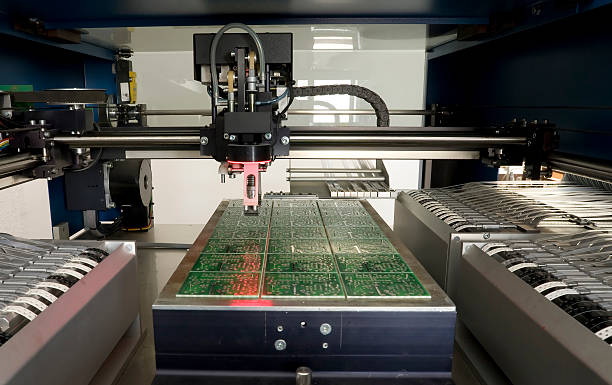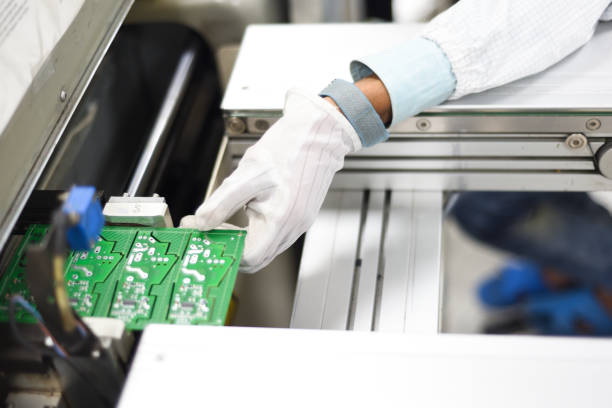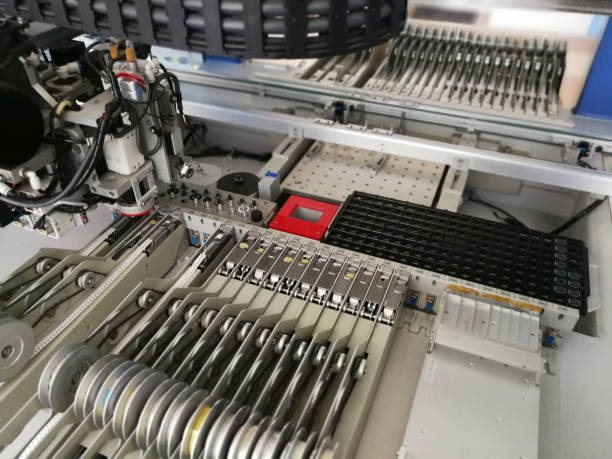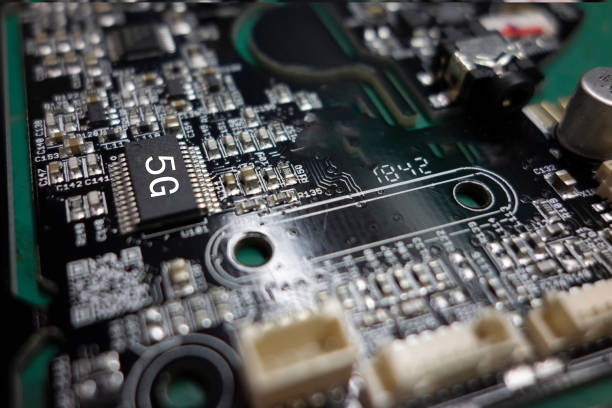Content Menu
● Understanding SMT Machine Tools
>> Key Components of SMT Machine Tools
● Common Problems in SMT Machine Tools
>> 1. Solder Bridging
>> 2. Insufficient Solder Joints
>> 3. Tombstoning
>> 4. Component Misalignment
>> 5. Insufficient Solder Paste Application
● Troubleshooting Process for SMT Machine Tools
● Best Practices for Maintaining SMT Machine Tools
>> Regular Maintenance Schedule
>> Training Operators
>> Utilize Technology
>> Monitor Environmental Conditions
● Conclusion
● Frequently Asked Questions (FAQs)
>> 1. What is solder bridging in SMT?
>> 2. How can I prevent insufficient solder joints?
>> 3. What causes tombstoning?
>> 4. How do I fix component misalignment?
>> 5. What should I do if there is insufficient solder paste applied?
Surface Mount Technology (SMT) has revolutionized the electronics manufacturing industry by allowing for the efficient assembly of compact and reliable electronic components on printed circuit boards (PCBs). However, like any advanced technology, SMT machine tools can encounter various problems that may hinder production efficiency and product quality. This article provides a comprehensive guide to troubleshooting common issues faced in SMT machine tools, focusing on effective solutions to ensure optimal performance.

Understanding SMT Machine Tools
SMT machine tools are specialized equipment used in the assembly of electronic components onto PCBs. The main processes involved include solder paste printing, component placement, and reflow soldering. Each of these steps is crucial for ensuring that the components are securely attached to the PCB and function correctly within the electronic device.
Key Components of SMT Machine Tools
- Solder Paste Printer: This machine applies solder paste onto the PCB pads where components will be placed.
- Pick-and-Place Machine: This equipment accurately places components onto the soldered pads on the PCB.
- Reflow Oven: This machine heats the assembly to melt the solder paste, creating a solid connection between the components and the PCB.
- Automated Optical Inspection (AOI): This system inspects the PCB for defects after assembly to ensure quality control.
Understanding these components is essential for troubleshooting because each part plays a critical role in the overall assembly process. Any malfunction or inefficiency in one area can lead to widespread issues in production.
Common Problems in SMT Machine Tools
Despite their sophistication, SMT machines can experience several common problems. Below are some frequent issues along with their causes and solutions.
1. Solder Bridging
Solder bridging occurs when excess solder connects two or more pads that should remain separate, leading to electrical shorts.
Causes:
- Improper solder paste application.
- Incorrect reflow profile settings.
- Component misalignment.
Solutions:
- Adjust the stencil thickness or aperture size to control solder volume.
- Optimize the reflow profile to prevent excessive solder flow.
- Ensure precise alignment of components during placement.
Solder bridging can be particularly detrimental in high-density PCBs where space is limited. To combat this issue, manufacturers often utilize advanced software for simulation and testing before actual production runs. This preemptive approach helps identify potential bridging issues early in the design phase.
2. Insufficient Solder Joints
Insufficient solder joints can result in electrical opens where connections are not made properly.
Causes:
- Clogged stencil apertures during solder paste printing.
- Poor component lead coplanarity.
Solutions:
- Regularly clean stencils and check for blockages.
- Ensure that all component leads are at the same height before reflow.
It's also important to monitor environmental factors such as humidity and temperature, which can affect solder paste performance. Implementing a controlled environment for production can mitigate these risks significantly.

3. Tombstoning
Tombstoning is a defect where one end of a component lifts off the PCB during reflow, resembling a tombstone.
Causes:
- Uneven heating during reflow.
- Imbalance in solder paste volume on either side of the component.
Solutions:
- Improve thermal profiling in the reflow oven.
- Ensure even application of solder paste on both sides of components.
To further prevent tombstoning, operators can also consider using different types of solder paste formulations that have better flow characteristics or adjusting placement speeds during pick-and-place operations to allow for more consistent placement of components.
4. Component Misalignment
Misalignment can lead to improper connections and circuit failures.
Causes:
- Inaccurate fiducial recognition by pick-and-place machines.
- Mechanical wear or damage to feeders.
Solutions:
- Regularly calibrate fiducial recognition systems.
- Maintain and replace worn-out feeders as necessary.
In addition to mechanical adjustments, training operators on best practices for loading and maintaining feeders can enhance alignment accuracy. An experienced operator can often spot potential issues before they escalate into larger problems during production runs.
5. Insufficient Solder Paste Application
This issue arises when too little solder paste is applied, resulting in weak connections.
Causes:
- Incorrect squeegee pressure during printing.
- Blocked stencil apertures.
Solutions:
- Adjust squeegee pressure for optimal paste transfer.
- Regularly inspect and clean stencils to prevent blockages.
Monitoring squeegee speed and angle can also help achieve better results during solder paste application. Implementing automated systems that adjust these parameters based on real-time feedback can significantly improve consistency across production batches.

Troubleshooting Process for SMT Machine Tools
When encountering issues with SMT machine tools, following a systematic troubleshooting process can help identify and resolve problems effectively. Here's a step-by-step guide:
1. Identify Symptoms: Observe and document any visible defects or performance issues during production runs.
2. Gather Data: Collect data from AOI inspections, production logs, and operator feedback to understand when and how issues occur.
3. Analyze Causes: Use root cause analysis techniques such as the "5 Whys" or fishbone diagrams to identify potential causes of defects.
4. Implement Solutions: Based on identified causes, implement corrective actions and monitor their effectiveness through subsequent production runs.
5. Review and Adjust Processes: Continuously review processes and make adjustments as necessary to improve overall efficiency and reduce defect rates.
Best Practices for Maintaining SMT Machine Tools
In addition to troubleshooting common problems, adhering to best practices for maintenance can significantly reduce downtime and improve overall efficiency:
Regular Maintenance Schedule
Establishing a regular maintenance schedule helps keep all components of SMT machines operating optimally. This includes:
- Cleaning all parts regularly to prevent dust accumulation.
- Lubricating moving parts according to manufacturer specifications.
- Checking electrical connections for wear or damage regularly.
Training Operators
Investing in operator training ensures that personnel are familiar with equipment operation, troubleshooting techniques, and maintenance procedures. Well-trained operators are more likely to notice signs of wear or malfunction before they lead to significant production issues.
Utilize Technology
Incorporating technology such as predictive maintenance software can help monitor equipment health in real-time. These systems analyze data from machine sensors to predict when maintenance should be performed before failures occur, thus preventing unexpected downtime.
Monitor Environmental Conditions
Environmental factors like temperature and humidity can greatly affect SMT processes. Maintaining an optimal environment ensures that materials behave as expected during assembly processes:
- Keep humidity levels between 30% and 70% for best results with solder paste.
- Maintain temperature controls within specified ranges for all equipment involved in assembly processes.
Conclusion
Troubleshooting common problems in SMT machine tools is essential for maintaining high-quality production standards in electronics manufacturing. By understanding potential issues such as solder bridging, insufficient solder joints, tombstoning, component misalignment, and insufficient solder paste application, operators can implement effective solutions that enhance productivity and product reliability.
Regular maintenance, calibration, and process optimization are crucial in preventing these problems from occurring in the first place. Furthermore, adopting best practices such as operator training and utilizing technology for predictive maintenance will contribute significantly to reducing defects and improving overall operational efficiency within SMT environments.

Frequently Asked Questions (FAQs)
1. What is solder bridging in SMT?
Solder bridging refers to an unwanted connection formed between two or more pads on a PCB due to excess solder during the reflow process. This can lead to electrical shorts and circuit failures.
2. How can I prevent insufficient solder joints?
To prevent insufficient solder joints, ensure proper cleaning of stencil apertures before printing and maintain coplanarity among component leads during placement to facilitate good contact with pads during reflow.
3. What causes tombstoning?
Tombstoning occurs when one end of a surface mount component lifts off from its pad during reflow due to uneven heating or imbalanced solder paste application on either side of the component.
4. How do I fix component misalignment?
To fix component misalignment, regularly calibrate fiducial recognition systems on pick-and-place machines and maintain feeders to ensure they are functioning correctly without wear or damage.
5. What should I do if there is insufficient solder paste applied?
If insufficient solder paste is applied, adjust squeegee pressure during printing for optimal paste transfer and regularly inspect stencils for blockages that may hinder proper application.





















